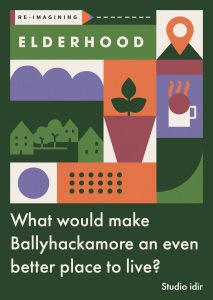Re-Imagining Elderhood

Re-Imagining Elderhood is a research project led by Self Organised Architecture and funded by Arts Council Ireland. Studio idir were selected, along with Islander Architects from Balbriggan and Ailbhe Cunningham from Cork, to investigate how neighbourhoods can encourage positive ageing and foster community.
Studio idir have chosen to focus on Ballyhackamore in Belfast where our office is based, and have led several workshops – we’ve loved hearing the community’s opinions on the area and ideas for the future! Watch this space to see how the project unfolds, follow us on Twitter and Instagram @re__hack.